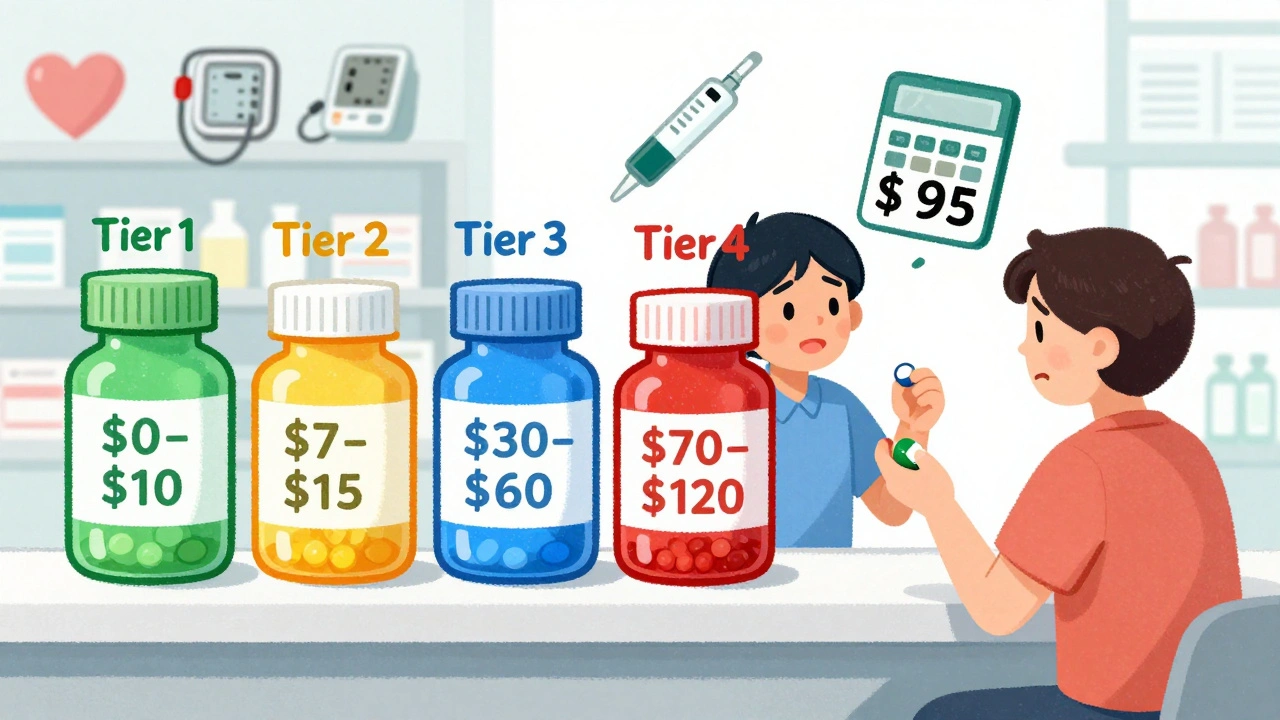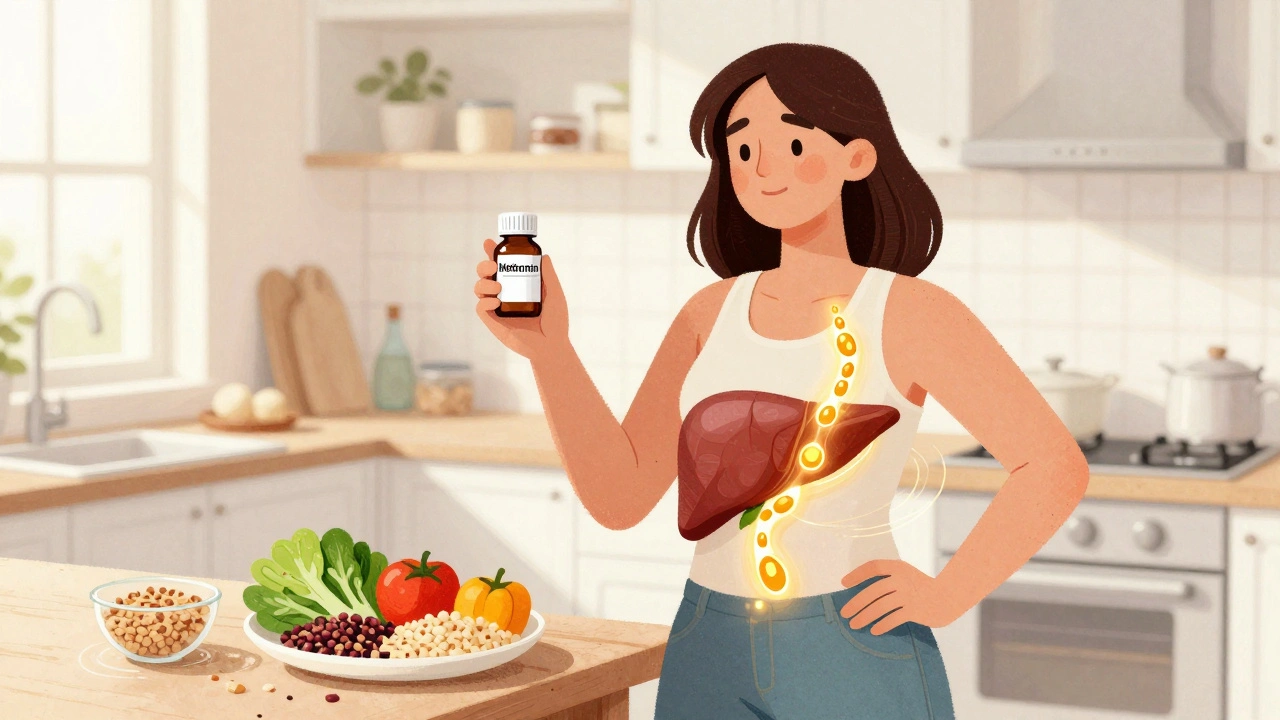If tiny can be mighty, this is it. Two tablespoons of chia seeds carry more fiber than most Aussies get at breakfast, plus a hit of plant omega-3. That can mean steadier energy, a happier gut, and a little help with heart markers. Not magic, but very useful when you use them right.
I’m a Sydney local who keeps a jar of chia gel in the fridge. It’s my insurance policy on rushed mornings. This guide gives you the exact dose, prep, and tricks to get the upside without the bloating or the hype. You’ll walk away knowing if chia is worth your spoon, and how to make it work for your day.
Jobs you likely want done after clicking this:
- Figure out what chia actually helps with-and what it doesn’t.
- Know the safe daily dose and how to prep it to avoid tummy issues.
- Get easy ways to use chia that taste good (not gluey).
- Understand risks, meds interactions, and who should be cautious.
- Decide between seeds, ground, oil, or capsules-and what to buy in Australia in 2025.
TL;DR - The Chia Basics You Actually Need
- Benefits you can feel: better bowel regularity, fuller for longer, and small improvements in blood lipids and blood pressure in some people. Evidence: human trials and meta-analyses up to 2023-2024 (e.g., Nutrition Research 2020 meta-analysis; Journal of Nutrition 2015 RCT; Hypertension Research 2021 review).
- Daily dose: start with 1 teaspoon (3 g) for two days, then 1 tablespoon (15 g). Typical maintenance is 1-2 tablespoons (15-30 g) per day. That’s plenty for fiber and omega-3 ALA.
- Prep rule: soak at least 10-15 minutes in liquid (1 part chia : 6 parts liquid) to form a gel. Safer to swallow, easier on digestion. Dry seeds + little water = choking risk (documented case, American College of Gastroenterology, 2014).
- Expectations: digestion changes in 2-3 days; satiety within the first meal; blood lipids or BP shifts need weeks. Chia supports habits; it isn’t a standalone weight-loss fix.
- Who should check with a clinician: people on blood thinners (omega-3s can have mild antiplatelet effects), low blood pressure, trouble swallowing, history of GI strictures, FODMAP-sensitive IBS (test a 1 teaspoon portion first), and anyone post-GI surgery.
If you do one thing: mix 1 tablespoon chia with 6 tablespoons water before your shower. Stir. By the time you’re done, it’s ready to add to yogurt or porridge.
How to Use Chia: Dose, Prep, Timing, and Smart Buying
Chia works because of three things: fiber (about 10-11 g per 28 g), plant omega-3 (ALA ~5 g per 28 g), and a gel-forming ability that slows digestion. That combo uses simple physics and physiology in your favour.
Dose decision tree (quick):
- New to high fiber? Start low: 1 tsp/day for two days -> 2 tsp/day -> 1 tbsp/day, then see how you feel after a week.
- Already hitting 25-30 g fiber/day? Go straight to 1 tbsp at breakfast.
- Chasing plant omega-3? Use 1-2 tbsp/day consistently; if you need DHA/EPA, consider adding an algal DHA supplement (NIH Office of Dietary Supplements, 2023).
Prep basics that remove hassle:
- Soak ratio: 1 part chia : 6 parts water/milk. Minimum 10-15 minutes; overnight is best. Whisk once, then again at 5 minutes to prevent clumps.
- Make-ahead gel (my Sydney routine): 4 tbsp chia + 1.5 cups water in a jar, shake, fridge. Scoop 2-3 tbsp gel into anything for three days.
- Texture control: less liquid = pudding; more liquid = drinkable. Add acid (lemon/lime) to thin and brighten.
Timing tips:
- For satiety: take with your first meal or 15-20 minutes before lunch as a small gel shot (mix with lemon water).
- For blood sugar smoothing: add to meals that have carbs-oats, rice bowls, smoothies.
- For bowel regularity: any time works; consistency beats clock-watching. Drink extra water the first week.
Whole vs ground vs oil vs capsules:
- Whole seeds: easiest, shelf-stable, high fiber. Fine to eat whole because the gel softens the hull.
- Ground (milled): slightly better access to ALA, but goes rancid faster. Store in the fridge.
- Chia oil: concentrated ALA, no fiber. Handy if fiber bothers you, but you lose the gut benefits.
- Capsules: convenience, usually pricier per gram ALA, no fiber. Ok when traveling.
Quality and buying (Australia, 2025):
- Price check: supermarket bulk packs ~A$10-A$16 per 1 kg for conventional; organic ~A$18-A$28. Chia oil capsules ~A$15-A$35 per 60-120 caps.
- What to look for: fresh nutty smell (not paint-like), light-proof packaging, a harvest date if available. Australian-grown chia is common (Northern WA/NT).
- Regulatory note: in Australia, chia is a food, not a medicine; it’s approved for broad use (FSANZ approvals expanded since the late 2000s). Supplements (oils/capsules) should follow TGA and food standards labelling.
Safety and meds interactions (sensible, not scary):
- Swallowing risk: always hydrate seeds before eating if you have any swallowing concerns. There’s a published esophageal impaction case in 2014 when dry seeds were chased with water.
- Blood thinners/anticoagulants: plant omega-3s (ALA) have mild antiplatelet effects; talk to your GP if you’re on warfarin, apixaban, or daily aspirin.
- Blood pressure meds: small BP reductions are reported in some studies; if you’re already low, monitor.
- Allergy: rare but real. Start with a tiny dose the first time.
- IBS/FODMAP: chia is low-FODMAP, but sudden fiber jumps can trigger bloating. Titrate slowly.
What the research actually says (short, honest):
- Cardio-metabolic: A 2020 Nutrition Research meta-analysis reported modest improvements in triglycerides and blood pressure with chia, especially at higher doses and longer durations. Effects vary.
- Weight: mixed results. A 2015 Journal of Nutrition RCT found no dramatic weight loss, but satiety scores improved, which helps you stick to a calorie target.
- Glycemic control: small, favorable effects when chia is added to carbohydrate-rich meals, likely from slowed gastric emptying.
- Omega-3: ALA from chia is heart-friendly, but conversion to EPA/DHA is limited (NIH ODS, 2023). For brain/eye DHA, plant-based folks often add algal DHA.

Real-World Uses, Recipes, Checklists, and the Numbers
Here are ways I actually use chia that don’t taste like wallpaper paste.
Five easy recipes (no nonsense):
- Two-minute chia yogurt: 1 tbsp chia gel + 3/4 cup Greek yogurt + berries + cinnamon. Crunch with 1 tbsp almonds.
- Overnight oats with a backbone: 1/3 cup oats + 1 tbsp chia + 2/3 cup milk + pinch salt + vanilla. Fridge overnight. Add sliced banana in the morning.
- Citrus chia refresher: juice of 1 lemon + 1 tsp honey + 1 tbsp chia + 300 ml cold water + ice + mint. Shake, wait 10 minutes, sip.
- Smoothie that actually holds hunger: 1 cup milk, 1 banana, 1 tbsp peanut butter, 1 tbsp chia, pinch cocoa, ice. Blend.
- Speed pudding: 2 tbsp chia + 1 cup milk + maple + cocoa. Whisk, rest 15 minutes. Top with orange zest.
Heuristics that keep it simple:
- The 1:6 gel rule works every time.
- Cap most days at 2 tbsp (30 g). That’s about a third of your daily fiber in one move.
- Chia pairs best with wet foods: yogurt, smoothies, porridge, soups. Dry salads? Use ground chia in a vinaigrette instead.
- Travel tip: dry-mix 1 tbsp chia + 1 tbsp milk powder + cinnamon in a zip bag. Just add water in a hotel mug.
Common pitfalls (and fixes):
- Gluey pudding: too little liquid or not enough resting. Add more liquid and whisk twice in the first 5 minutes.
- Bloating day one: you jumped from 5 g to 30 g fiber. Roll back to 1 tsp for two days and drink an extra glass of water.
- No effect on hunger: add protein (Greek yogurt or whey) and volume (berries) to the chia base.
Nutrition snapshot per standard serving (2 tbsp/28 g), with data drawn from USDA FoodData Central (2024):
| Nutrient (per 28 g) | Amount | % of Daily Value (approx.) |
|---|---|---|
| Calories | ~137 kcal | - |
| Fiber | ~10.6 g | 35-40% (based on 25-30 g/day) |
| Protein | ~4.7 g | 9-10% |
| Total fat | ~8.6 g | - |
| Omega-3 (ALA) | ~5.0 g | No official DV; meaningful intake |
| Calcium | ~177 mg | 13-18% |
| Magnesium | ~95 mg | 22-30% |
| Phosphorus | ~265 mg | 20-25% |
| Iron | ~2.2 mg | 12-28% (higher need in menstruating adults) |
| Zinc | ~1.0 mg | 9-12% |
How chia stacks up to close cousins (quick notes, no fluff):
- Flaxseed: similar ALA, more lignans; must be ground to access nutrients. Taste is nuttier. If you’re chasing lignans, flax wins.
- Hemp seed: more protein, less fiber, low ALA. Great topper, not a fiber play.
- Fish oil: direct EPA/DHA, zero fiber. If your goal is DHA for brain/eye, fish or algal oil beats chia.
Cost math (Sydney, 2025): 1 kg bag at A$12 gives ~35 servings of 28 g at ~34 cents per serving. Not many foods buy you that much fiber at that price.
Quick shopping checklist:
- Whole seeds (black or white, color doesn’t matter nutritionally)
- Light-proof bag or jar
- Harvest/best-before date within 12-18 months
- No off smell; fresh is neutral-nutty
- Optional: a small bottle of chia oil if fiber triggers you but you still want ALA
FAQ and Next Steps: Fixes, Safety, and Smart Habits
Rapid-fire FAQ:
- Do I have to soak chia? If you’re healthy and chew well, you can sprinkle on yogurt. But soaking improves texture and lowers choking risk. If you’ve any swallowing or esophageal issues, always pre-soak.
- Whole or ground-what’s better? For fiber and convenience, whole is great. If you’re after every drop of ALA, milled may help a bit. Keep milled in the fridge to prevent rancidity.
- Can kids have chia? Yes, small amounts mixed into foods are fine for most kids. Start with 1/2 to 1 teaspoon and plenty of fluid.
- Is chia keto? Yes-very low net carbs due to fiber. It’s popular in keto baking as a binder.
- Thyroid and chia? Chia isn’t a major goitrogen source. If you’ve thyroid issues, keep iodine adequate and enjoy chia as part of a balanced diet.
- Can I eat chia dry? I don’t recommend it. Dry seeds swell. Mix with food or liquid first.
- How long does chia last? Whole seeds: 18-24 months in a cool pantry; longer in the fridge. Ground: use within 4-6 weeks; keep refrigerated.
Troubleshooting by symptom:
- Bloating or gas: cut back to 1 teaspoon for a few days and increase water. Consider splitting your daily dose into two smaller servings.
- Constipation after starting chia: you increased fiber but not fluids. Add 1-2 extra glasses of water and a wet food base (yogurt/porridge). If it persists, drop the dose.
- Blood sugar still swinging: add chia to the meal that carries most starch for you-oats, rice, pasta. Back it with protein (eggs, yogurt, tofu).
- No change in cholesterol after two months: check the rest of your fats. Swap butter for olive oil, add nuts, and keep chia in-Heart Foundation Australia (2024) supports a pattern rich in unsaturated fats.
Seven-day starter plan (simple and sane):
- Days 1-2: 1 tsp chia in yogurt. Extra glass of water.
- Days 3-4: 2 tsp chia in overnight oats.
- Days 5-7: 1 tbsp chia gel before lunch as a citrus shot; sprinkle an extra teaspoon on dinner soup or salad.
When chia isn’t the right tool:
- You need DHA/EPA for specific medical reasons: add fish or an algal DHA supplement.
- You’re already on a very high-fiber regimen and feel bloated: shift to chia oil for ALA and get fiber from lower-fermenting sources like oats and kiwi.
- You have swallowing difficulties or strictures: only use chia that’s fully hydrated into a smooth gel, and clear it with your clinician.
Credibility corner (who says so?): The nutrient data above comes from USDA FoodData Central (2024). Omega-3 physiology and ALA conversion: NIH Office of Dietary Supplements (updated 2023). Cardiometabolic outcomes: pooled human data published 2015-2023, including a 2020 Nutrition Research meta-analysis and a 2021 Hypertension Research review. Australian context on healthy fats: Heart Foundation (2024). Food status: FSANZ approvals have long cleared chia as a food in Australia.
Final nudge from a Sydney kitchen: spoon your gel into whatever you’re already eating. Don’t turn your life upside down for a seed. Make it easy to win, and you’ll actually stick with it.







Mary Louise Leonardo
August 30, 2025 AT 00:00Did you know the big grain lobby is pushing chia as a “miracle” to keep us buying processed “health” foods while they hide the real truth about sugar? It's like they sprinkled glitter on junk to sell us a seed.
Alex Bennett
September 19, 2025 AT 03:00Reading your guide feels a bit like stepping into a modern alchemy lab, where tiny black specks promise to unlock energy, gut harmony, and heart health. First, let’s applaud the clear dose ladder – starting small and scaling up is exactly the kind of measured experimentation a philosopher would endorse. Yet, the hype around “super‑seeds” often eclipses the mundane truth: chia is just a high‑fiber, omega‑3 carrier, nothing more magical than that. Your 1‑part chia to 6‑part liquid rule mirrors basic physics – the seeds absorb water, swell, and form a gel that slows gastric emptying. That slowdown explains the satiety you mention, but it also means any sudden fiber surge can irritate a sensitive gut, which is why your two‑day low‑dose intro is sensible. The meta‑analysis you cite does show modest triglyceride drops, yet the effect size is comparable to swapping butter for olive oil, so the “heart‑saving” claim should be tempered. I also appreciate the caution for blood‑thinners; ALA’s antiplatelet action is real, albeit mild, and a quick chat with a GP can prevent unwanted bleeding. Your seven‑day starter plan is a pragmatic way to integrate chia without turning breakfast into a science experiment. On the topic of conversions, remember that ALA from plants converts to EPA/DHA at under 10 %, so if you chase brain DHA you’ll need algal supplements or fish oil. The cost breakdown is useful – A$0.34 per serving beats most specialty powders, but bulk shoppers should still watch expiration dates to avoid rancidity. Your advice on storage – cool, dry, light‑proof – aligns with what food scientists recommend for preserving polyunsaturated fats. While you dismiss “gluey pudding” as a flaw, many keto bakers actually love that texture for binding, so the perspective is situational. I’d add that chia can thicken soups and sauces, a tip not many guides mention. Finally, the cultural note about Australian‑grown chia reminds us that local sourcing reduces carbon footprints, a small win for sustainability. All in all, your guide hits the sweet spot between evidence and everyday practicality, as long as readers remember that no single seed will replace a balanced diet.
Mica Massenburg
October 9, 2025 AT 06:00Looks like the “science‑backed” steps you lay out are just a cover for the agribusiness elite to lock us into buying their pre‑packaged chia blends, all while they sprinkle cryptic additives that keep us dependent. They want us to think we’re in control, but the real agenda is a data harvest on our health habits. Keep your eyes open – the next “super‑seed” will probably be engineered to sync with your smartwatch.
Sarah Brown
October 29, 2025 AT 08:00Great job breaking down the basics, especially the clear “start low, go slow” mantra – that’s exactly how we keep people from feeling overwhelmed. I’d add a quick tip: keep a dedicated chia jar in the fridge so you never have to hunt for it when you’re rushed. Also, pairing chia with a protein punch (like Greek yogurt) can boost the satiety effect you mentioned. For anyone worried about the “gluey” texture, try a 1:8 liquid ratio for a smoother drink. Remember, the goal is consistency, not perfection, so celebrate the small daily wins.
Max Canning
November 18, 2025 AT 11:00Love the jar hack! I’ve got three on my shelf and they’re my secret weapons for messy mornings – just dump a scoop into coffee or a smoothie and boom, instant energy boost. If you’re feeling adventurous, toss a pinch of cinnamon or cacao nibs for a flavor kick. Keep the vibe upbeat and you’ll never miss a day!
Nick Rogers
December 8, 2025 AT 14:00Indeed, consistency, yields, measurable, health, benefits.
Tesia Hardy
December 28, 2025 AT 17:00Honestly, i think chia is a simple win for most diets – just remember to drink plenty of water. I tried the overnight oats combo and it turned out super creamy, not icky at all. If you’re new, start with a tiny spoonful in your morning yogurt and see how your belly feels. It’s easy to overlook, but once you get the habit it just slides into any meal. Keep experimenting and you’ll find the perfect flavor match!